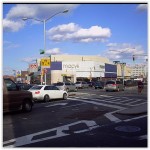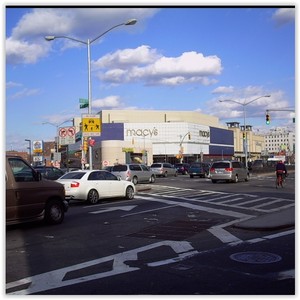 Elmhurst (formerly Newtown) is a middle class neighborhood in the New York City borough of Queens in the United States, on Long Island. It is bounded by Roosevelt Avenue on the north; the Long Island Expressway on the south; Junction Boulevard on the east; and the New York Connecting Railroad on the west. The neighborhood is part of Queens Community Board 4.
Elmhurst (formerly Newtown) is a middle class neighborhood in the New York City borough of Queens in the United States, on Long Island. It is bounded by Roosevelt Avenue on the north; the Long Island Expressway on the south; Junction Boulevard on the east; and the New York Connecting Railroad on the west. The neighborhood is part of Queens Community Board 4.
HISTORY
The village was established in 1652 by the Dutch as Middenburgh (Middleburgh) and was a suburb of New Amsterdam (Nieuw Amsterdam) in New Netherland (Nieuw Nederland). The original European settlers of Elmhurst were from the nearby colony of Maspat (now called Maspeth), following threats and attacks by local native Americans.
When the British took over New Netherland in 1664, they renamed Middleburgh as New Town (Nieuwe Stad) to maintain the Dutch heritage. This was eventually simplified to Newtown. Among the English settlers in the present Elmhurst section of Newtown was Gershom Moore, in whose orchard a chance seedling produced the Newtown Pippin, Colonial America’s most famous apple. The village of Newtown was established as the town seat for the Township in 1683. The village was renamed Elmhurst in 1896 to identify the area with a new housing development, to avoid association with the larger Township and the Creek.
Once Queens joined the City of Greater New York in 1898, Elmhurst developed into a fashionable district due to a housing development that was built by the Cord Meyer Development Company between 1896 and 1910, north of the Port Washington Branch railroad station. They expanded their holdings between 1905 and 1930, including Elmhurst Square, Elmhurst South, Elmhurst Heights, and New Elmhurst. Elmhurst also became home to the Grand Street LIRR station just west of the current Grand Avenue – Newtown (IND Queens Boulevard Line) station. The Grand Street LIRR station was served by the Main Line and the former Rockaway Beach Branch.
Prior to World War II, Elmhurst was an almost exclusively Jewish and Italian neighborhood. Following the war, Elmhurst evolved into what has been considered one of the most ethnically diverse neighborhoods in New York City. By the 1980s, there were persons from 112 nations in residence in the neighborhood, which has continued to further diversify since then.
Crime rate in Elmhurst rose between the 1980s and 1990s, but slowed down in the 21st century with more presence of policing in the neighborhood. It is home to mainly immigrant working-class families and has continued to soar in population.

